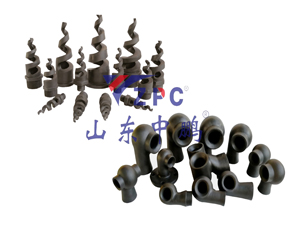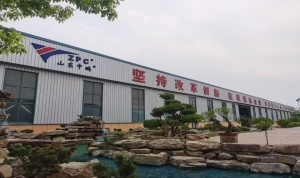In the pursuit of cleaner energy production, power plants are increasingly adopting advanced technologies to mitigate their environmental impact. One of these technologies is the use of flue gas desulfurization (FGD) systems, which play a vital role in reducing sulfur dioxide emissions. At the heart of these systems are FGD silicon carbide nozzles, which are made from a cutting-edge ceramic material called silicon carbide. This blog will explore the importance of these nozzles, their design changes, and their impact on environmental sustainability.
Silicon carbide nozzles are designed to facilitate the desulfurization process in power plants. Their primary function is to remove sulfur dioxide (SO2) and other harmful pollutants from flue gases emitted during the combustion of fossil fuels, especially coal. The importance of this process cannot be overstated, as sulfur dioxide is a major contributor to acid rain and air pollution, which can have devastating effects on human health and the environment. By using FGD silicon carbide nozzles, power plants can significantly reduce emissions and comply with strict environmental regulations.
The designs of FGD silicon carbide nozzles are tailored to optimize their performance in a variety of applications. Two common nozzle types used in desulfurization systems are the spiral full cone nozzle and the vortex hollow cone nozzle. The spiral full cone nozzle is designed to produce a fine mist of the absorbent liquid, which enhances the contact between the liquid and the flue gas, thereby increasing the efficiency of the desulfurization process. The vortex hollow cone nozzle, on the other hand, produces a swirling spray pattern that better distributes the absorbent, ensuring thorough treatment of the flue gas. The choice of these nozzle types depends on the specific requirements of the power plant and the characteristics of the flue gas being treated.
One of the main advantages of silicon carbide as a FGD nozzle material is its excellent durability and resistance to wear and corrosion. Power plants often operate under harsh conditions, with high temperatures and abrasive particles present in the flue gas. Silicon carbide nozzles can withstand these challenging environments, ensuring longer service life and reduced maintenance costs. This durability not only improves the efficiency of the desulfurization process, but also helps improve the overall reliability of power plant operations.
In addition to desulfurization, FGD SiC nozzles also play a role in denitrification and dust removal. Flue gas from coal-fired power plants contains not only sulfur dioxide, but also nitrogen oxides (NOx) and particulate matter. By combining FGD systems with denitrification technology, power plants can treat multiple pollutants at the same time, further improving air quality. The ability to address these different emissions is critical to meeting environmental standards and reducing the overall carbon footprint of energy production.
The environmental impact of using FGD silicon carbide nozzles is far-reaching. Without effective desulfurization and denitrification, flue gas emissions from power plants can cause severe air pollution, leading to respiratory diseases and environmental degradation. In addition, unfiltered emissions from coal-fired power plants can damage the hot end components of gas turbines in combined cycle systems, leading to expensive repairs and operating inefficiencies. By investing in advanced FGD technology, power plants can not only protect the environment, but also improve their operational performance and economic viability.
As the global energy landscape continues to evolve, the need for cleaner, more sustainable energy sources is becoming more urgent. FGD silicon carbide nozzles are an important part of the transition to green energy production. By effectively removing harmful pollutants from flue gases, these nozzles help power plants meet regulatory requirements and contribute to a healthier planet. As technology advances and the demand for environmental stewardship continues to grow, the role of FGD silicon carbide nozzles in the fight against air pollution and climate change will undoubtedly become more critical.
In summary, the FGD Silicon Carbide Nozzle is an important innovation in the field of power plant desulfurization. Its unique design, durability, and effectiveness in removing sulfur dioxide and other pollutants make it a key factor in the pursuit of cleaner energy production. As power plants continue to adopt advanced technologies to reduce their environmental impact, the importance of FGD Silicon Carbide Nozzles will only increase, paving the way for a more sustainable future.
Post time: Mar-24-2025

